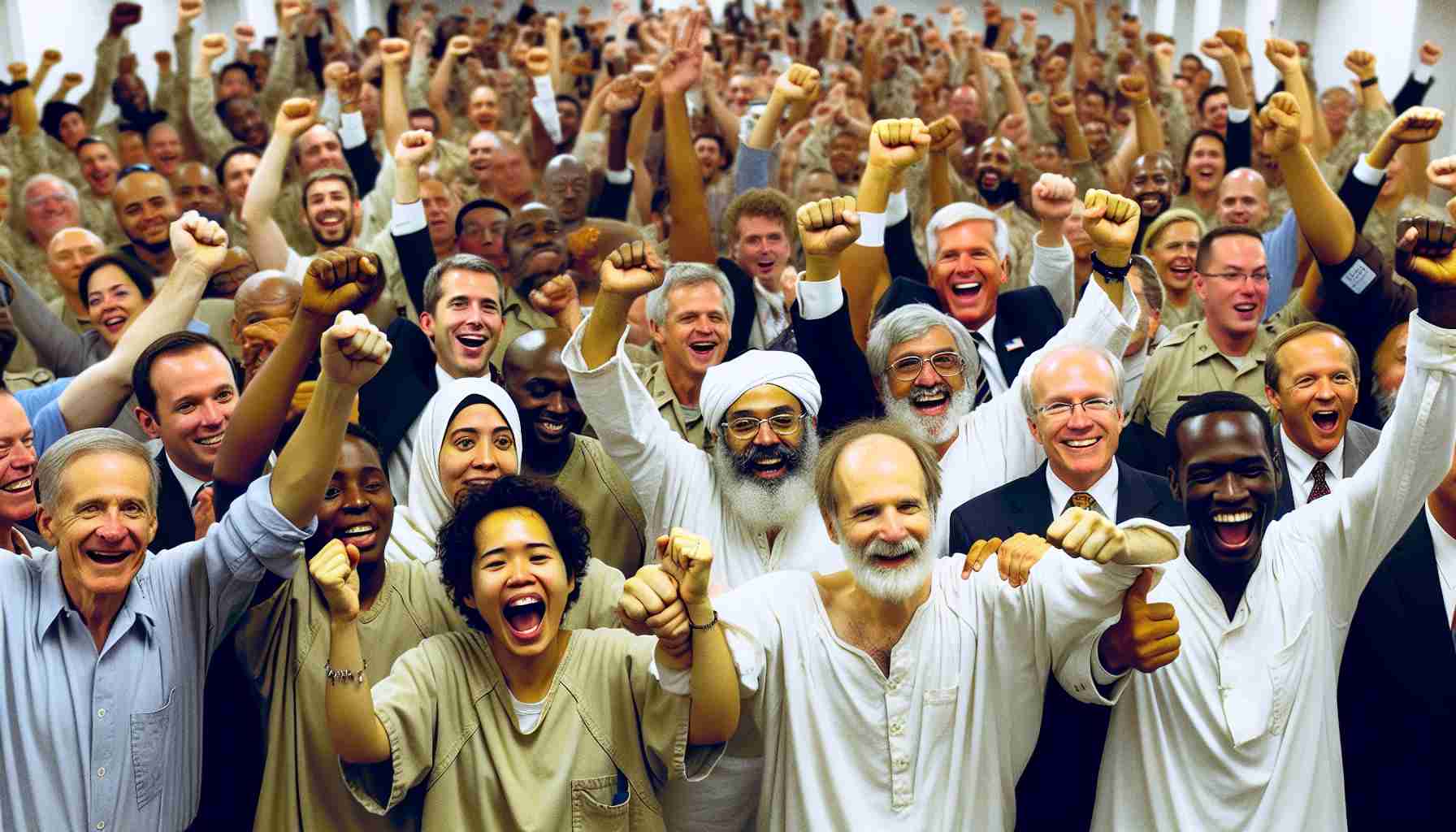
Successful International Mission: 24 Individuals and 2 Children Freed in Historic Prisoner Exchange
An Extraordinary International Effort
Yesterday, a historic prisoner exchange took place between Russia and Western countries, marking the largest such exchange since the Cold War. A total of 24 prisoners from seven nations, including two children of a Russian couple, were released in this monumental operation.
Reunion on American Soil
In the early hours, a plane originating from Ankara, Turkey, landed at Andrews Air Force Base near Washington. Among the released prisoners were American journalist Evan Gershkovich, former marine Paul Whelan, and Russian-American journalist Alsu Kurmasheva, who were warmly reunited with their families upon arrival.
Warm Reception from Leaders
President Joe Biden and Vice President Kamala Harris were also present to welcome the former prisoners as they disembarked the aircraft. President Biden emphasized the importance of safeguarding American citizens both domestically and abroad, while Vice President Harris expressed the profound significance of the day as evident in the reunions with families.
International Cooperation and Diplomacy
The prisoner exchange involved several countries, showcasing a testament to the power of diplomacy and strengthening alliances. Coordinated by Turkey, this operation saw the involvement of Russia, the U.S., Germany, Poland, Slovenia, Norway, and Belarus. President Biden highlighted the significance of having strong diplomatic relationships in navigating complex international negotiations.
Critiques and Controversies
Nevertheless, while hailed as a successful mission, the exchange faced criticism from various quarters. Amnesty International expressed concerns that the deal might embolden Russia to engage in further arrests. Additionally, former President Donald Trump and other critics questioned the balance of the exchange, labeling it as potentially disadvantageous for the U.S.
Ripples Across Nations
The impact of this prisoner exchange extended beyond American soil, as German Chancellor Olaf Scholz welcomed the freed prisoners from Russia at the Cologne airport. The emotional reunions underscored the relief felt by many who had feared for the well-being and lives of those held in captivity.
This international operation serves as a significant example of diplomatic efforts transcending borders to secure the release of individuals in precarious situations, fostering hope for future cooperation among nations.
New Developments Uncovered in the Historic Prisoner Exchange
While the recent prisoner exchange between Russia and Western countries made headlines for its success in securing the release of 24 individuals and 2 children, there are additional details that have emerged shedding light on the intricacies of the operation.
Key Questions and Answers:
1. How were the prisoners selected for exchange?
It was revealed that the selection process for the prisoners involved in the exchange was a result of extensive negotiations between the participating countries. Factors such as the nature of charges, individual circumstances, and geopolitical considerations played a role in determining the final list of individuals to be released.
2. What role did intermediary countries play in facilitating the exchange?
Aside from the prominent involvement of Turkey in coordinating the exchange, lesser-known intermediary nations such as Slovenia and Norway played crucial roles behind the scenes. These countries provided logistical support and diplomatic channels to smoothen the negotiation process.
Challenges and Controversies:
– Ensuring Fairness in the Exchange: One of the challenges faced during the prisoner exchange was ensuring a fair and balanced agreement between the involved parties. Disputes over the proportionality of releases and concerns regarding future repercussions of the deal sparked heated debates.
– Geopolitical Ramifications: Critics raised concerns about the potential geopolitical consequences of the exchange, particularly in terms of emboldening Russia’s aggressive behavior in the future. The delicate balance of power dynamics in international relations was a pressing issue that continued to ignite controversies.
Advantages and Disadvantages:
Advantages: The successful prisoner exchange demonstrated the potential of diplomatic cooperation in resolving complex international disputes. It highlighted the efficacy of dialogue and negotiation in securing the freedom of individuals caught in cross-border conflicts.
Disadvantages: Despite its success, the exchange was not devoid of criticism and skepticism regarding its long-term implications. Balancing the immediate humanitarian gains with the broader strategic outcomes posed a challenge, raising debates over the perceived advantages and disadvantages of the operation.
For further insights into international diplomacy and crisis resolution, you can explore the website of the United Nations, which addresses key global issues and promotes multilateral cooperation for peace and security.
















